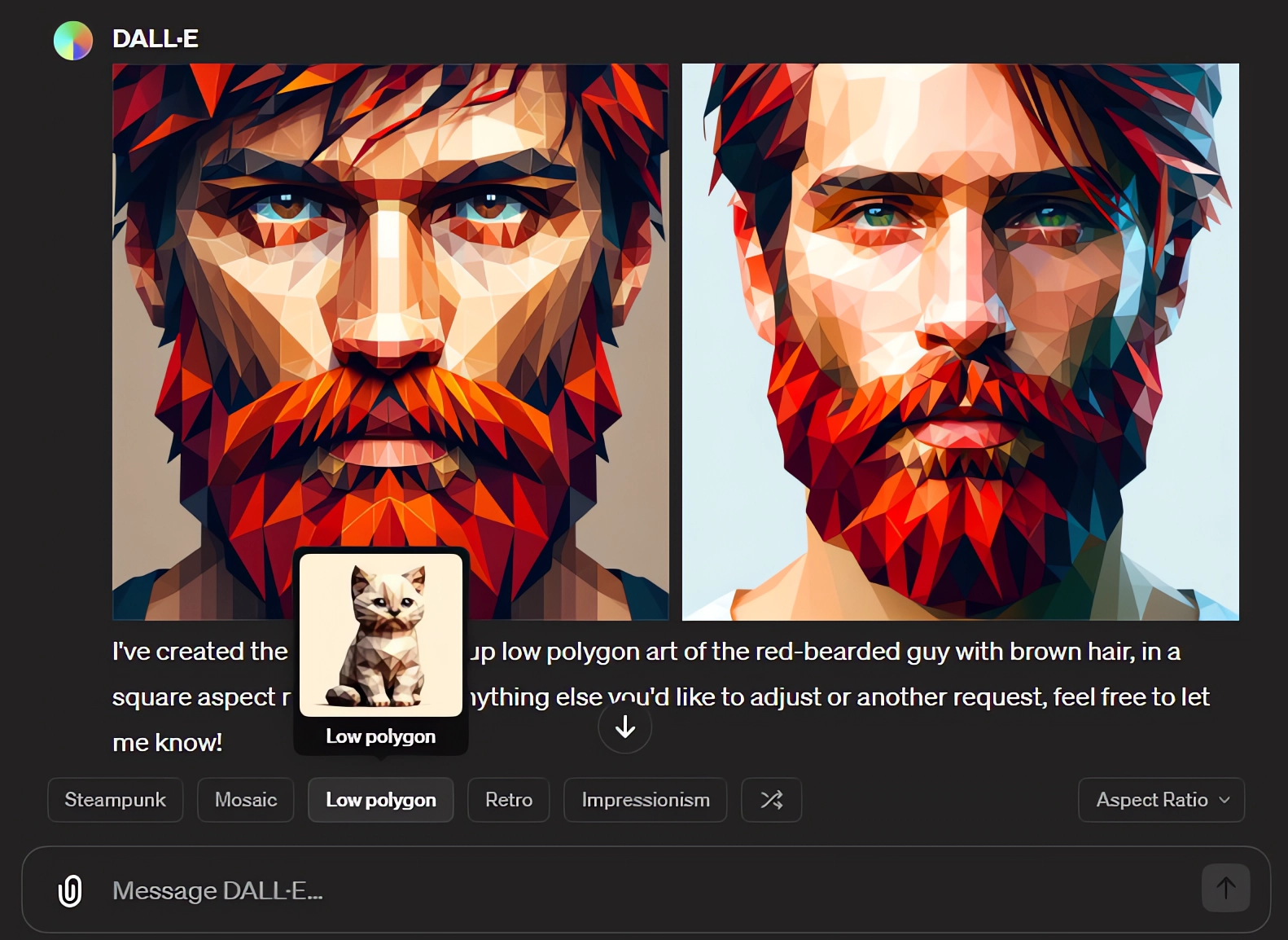
DALL-E 3: Complete Buyer's Guide
API-first solution for scalable business content creation
DALL-E 3 represents OpenAI's strategic entry into enterprise AI image generation, positioning itself as the API-first solution for scalable business content creation. Unlike creative-focused alternatives, DALL-E 3 targets organizations requiring programmatic image generation with reliable prompt interpretation and seamless integration into existing business workflows.
Market Position & Maturity
Market Standing
DALL-E 3 occupies a strategic position in the enterprise AI art generation market as OpenAI's flagship image generation solution, leveraging the company's established reputation in generative AI to target business applications requiring reliable, scalable content creation[51][52].
Company Maturity
OpenAI's established position in the generative AI market provides substantial backing for DALL-E 3's continued development and support. The company's focus on enterprise applications and API-driven solutions demonstrates strategic commitment to business market segments rather than consumer creative tools[52].
Growth Trajectory
The platform demonstrates strong enterprise adoption patterns with 30% current usage and an additional 35% of organizations actively testing for marketing, e-commerce, and rapid prototyping applications[53].
Industry Recognition
InfoTech ratings show 87 Likeliness to Recommend, 93 Plan to Renew, and 84 Satisfaction of Cost Relative to Value, though the timing of these assessments requires verification[50].
Strategic Partnerships
Microsoft Designer integration represents a key strategic partnership that provides workflow advantages for organizations using Microsoft business tools, though this integration remains limited to English language usage[45].
Longevity Assessment
OpenAI's established market position and continued investment in enterprise applications support strong long-term viability prospects for DALL-E 3, particularly as organizations increasingly adopt API-driven AI solutions for business applications[52][53].
Proof of Capabilities
Customer Evidence
Organizations report faster concept development compared to manual processes, with users noting the platform's ability to 'understand complicated prompts' enabling more efficient campaign variant creation[50][51].
Quantified Outcomes
InfoTech customer satisfaction metrics show 87% Likelihood to Recommend and 93% Plan to Renew, indicating strong customer advocacy and successful long-term implementations[50].
Case Study Analysis
The platform shows particular strength in rapid prototyping scenarios where multiple concept variations can be generated quickly for stakeholder review[49][50].
Market Validation
30% of organizations currently use DALL-E 3 with an additional 35% actively testing the platform for marketing, e-commerce, and rapid prototyping applications[53].
Competitive Wins
Comparative analysis suggests DALL-E 3 excels in prompt fidelity and API-driven deployments compared to alternatives, though it may trail Midjourney in stylistic versatility[47].
Reference Customers
Enterprise customers consistently report satisfaction in applications requiring brand-appropriate imagery, demonstrating the platform's capability to meet business quality standards[47][53].
AI Technology
The system demonstrates measurable improvements in prompt comprehension for complex instructions, with users reporting enhanced ability to parse detailed creative briefs and maintain coherence across multiple elements within single images[49][51]. Text rendering accuracy has improved significantly, addressing one of the most common enterprise concerns with AI-generated visuals for business applications[49][51].
Architecture
DALL-E 3's technical architecture centers on cloud-based processing infrastructure with significant improvements in prompt interpretation accuracy and text rendering capabilities compared to its predecessors. The platform processes images through OpenAI's distributed cloud infrastructure, offering resolution options from standard to high-definition with corresponding quality improvements for business applications[49][51].
Primary Competitors
Adobe Firefly, Midjourney, Stable Diffusion
Competitive Advantages
DALL-E 3 excels in prompt interpretation accuracy and API availability compared to alternatives like Midjourney, which currently lacks comprehensive enterprise API access[47][32]. ChatGPT integration provides unique conversational refinement capabilities not available in competing platforms[52]. Microsoft Designer integration offers workflow advantages for organizations using Microsoft business tools[45].
Market Positioning
Within the enterprise market, DALL-E 3 positions itself as a reliable business tool rather than a creative platform[53]. This positioning suits organizations treating AI image generation as a productivity enhancement rather than a creative transformation initiative, where consistency and integration matter more than artistic innovation.
Win/Loss Scenarios
DALL-E 3 wins when API integration capabilities, Microsoft ecosystem alignment, and prompt interpretation accuracy align with organizational priorities. Alternatives may be preferred when Creative Cloud integration, on-premises deployment, or extensive creative exploration capabilities take precedence over business efficiency and integration flexibility.
Key Features

Pros & Cons
Use Cases
Integrations
Pricing
Featured In Articles
Comprehensive analysis of AI Art Generators for AI Design for AI Design professionals. Expert evaluation of features, pricing, and implementation.
How We Researched This Guide
About This Guide: This comprehensive analysis is based on extensive competitive intelligence and real-world implementation data from leading AI vendors. StayModern updates this guide quarterly to reflect market developments and vendor performance changes.
59+ verified sources per analysis including official documentation, customer reviews, analyst reports, and industry publications.
- • Vendor documentation & whitepapers
- • Customer testimonials & case studies
- • Third-party analyst assessments
- • Industry benchmarking reports
Standardized assessment framework across 8 key dimensions for objective comparison.
- • Technology capabilities & architecture
- • Market position & customer evidence
- • Implementation experience & support
- • Pricing value & competitive position
Research is refreshed every 90 days to capture market changes and new vendor capabilities.
- • New product releases & features
- • Market positioning changes
- • Customer feedback integration
- • Competitive landscape shifts
Every claim is source-linked with direct citations to original materials for verification.
- • Clickable citation links
- • Original source attribution
- • Date stamps for currency
- • Quality score validation
Analysis follows systematic research protocols with consistent evaluation frameworks.
- • Standardized assessment criteria
- • Multi-source verification process
- • Consistent evaluation methodology
- • Quality assurance protocols
Buyer-focused analysis with transparent methodology and factual accuracy commitment.
- • Objective comparative analysis
- • Transparent research methodology
- • Factual accuracy commitment
- • Continuous quality improvement
Quality Commitment: If you find any inaccuracies in our analysis on this page, please contact us at research@staymodern.ai. We're committed to maintaining the highest standards of research integrity and will investigate and correct any issues promptly.